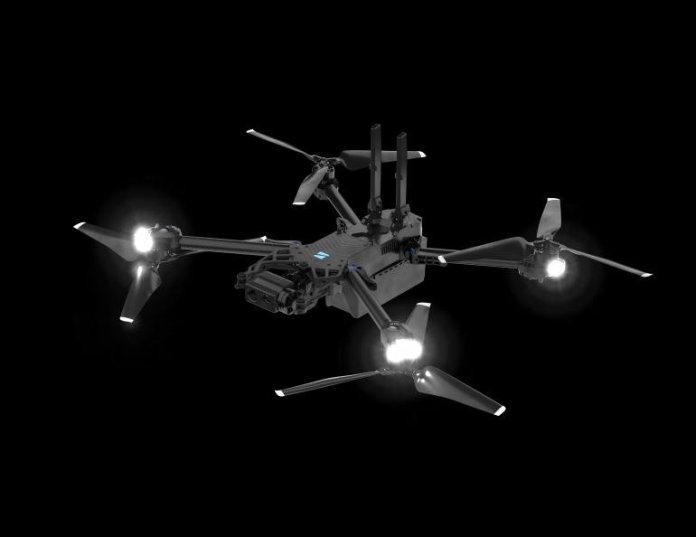Blog entry by Bruce McPherson

Residents of a remote Alaska coastal community will fly unmanned aircraft systems to support the Coast Guard’s oil spill response, fuel tank inspection, and search and rescue efforts.
The project, supported by the University of Alaska Fairbanks, will also provide data to enhance local decision-making on environmental and community issues.
Seven residents of Unalakleet, about 150 miles across Norton Sound from Nome, are participating in the program run by Jessica Garron, an affiliated researcher with the Alaska Center for Unmanned Aircraft Systems Integration at the UAF Geophysical Institute. Garron is a research assistant professor in the International Arctic Research Center at UAF.
“There is a disconnect between what the Coast Guard can do in Alaska in a spill response type of environment,” Garron said. “One of those problems is a 24- to 48-hour lag time in getting response teams into rural Alaska.
“This project is working to train a workforce to provide situational awareness during emergency response events,” she said, “as well as to support the Coast Guard’s mission of performing bulk fuel storage inspections while simultaneously providing workforce development opportunities in support of localized, science-based decision-making.”
The unmanned aircraft systems, or UAS, project runs through April 2022 and is funded by the Arctic Domain Awareness Center, a Center of Excellence in the U.S. Department of Homeland Security.
The UAS project was born from a program initiated by the Native Village of Unalakleet. In 2018 the group received funding from the Bureau of Indian Affairs’ Tribal Resilience and Ocean and Coastal Management and Planning Program to assess the use of unmanned aircraft systems and online tools to improve local decision-making.
That program was led by John Henry Jr., deputy director of the Native Village of Unalakleet; Margaret Hall, associate director of the national nonprofit Model Forest Policy Program; and Garron. Henry, who is joining six other Unalakleet residents in the training, and Hall are co-investigators in the project.
Henry said the BIA grant funding had two elements.
“One was to address future climate-related ocean and coastal management planning challenges that tribes may incur, and the second is to build long-term resilience through the establishment of a self-sustaining, localized and ongoing data collection and analysis program.”
To do so, the project team chose nine scientific study areas to assess based on Henry’s local insight: coastal erosion, river and sea flood preparation, infrastructure, water quality, air quality, cultural and historical site identification, extractable resources, wildlife, and plant community.
Unmanned aircraft were seen as useful for supporting local decision making in several of those areas.
“The unmanned aircraft systems might be able to offer the ability to build on the traditional ecological knowledge that is passed on by elders and other members of the community,” Hall said.
“This project is also hopefully an economic development opportunity for some of the members of the Norton Sound area, especially Unalakleet at this time,” she said. She noted that other Native villages in the region such as Elim, Shaktoolik and Golovin could eventually choose to pursue their own program or participate in this current one, if expanded in the future.
One major area in which the program can benefit the region is the detection and response to an oil spill, Hall said. The Norton Bay Intertribal Watershed Council has expressed concerns about heightened potential for spills as marine traffic increases year-round due to continuing declines in annual sea ice and about the emergency response time to an incident. Oil spills in the Bering Strait are also of increasing concern to the Coast Guard and other government entities that would be called upon to respond to an oil spill.
The UAS program launched in February, and the participants were selected in March. Each has a background that will prove helpful in the array of potential UAS uses, including environmental monitoring, hazardous materials handling, tank inspection, information technology and repair work.
The first virtual FAA training for UAS operation occurred in April; the final session occurred in early June. The participants will be taking their Federal Aviation Administration Part 107 certification exam in Anchorage. One participant has already been certified.
Flight protocols for various mission scenarios will be developed over the summer by the Unalakleet pilots, UAF researchers and Coast Guard personnel.
Smaller training aircraft have been procured for initial hands-on work with Garron’s team this fall. Operational aircraft for the program will be purchased in August or September and will be used for data collection flights after completion of hands-on training.
The program’s leaders hope the Unalakleet project can serve as a model and be replicated elsewhere in Alaska and in Coast Guard sectors in the Lower 48.
By PRESS